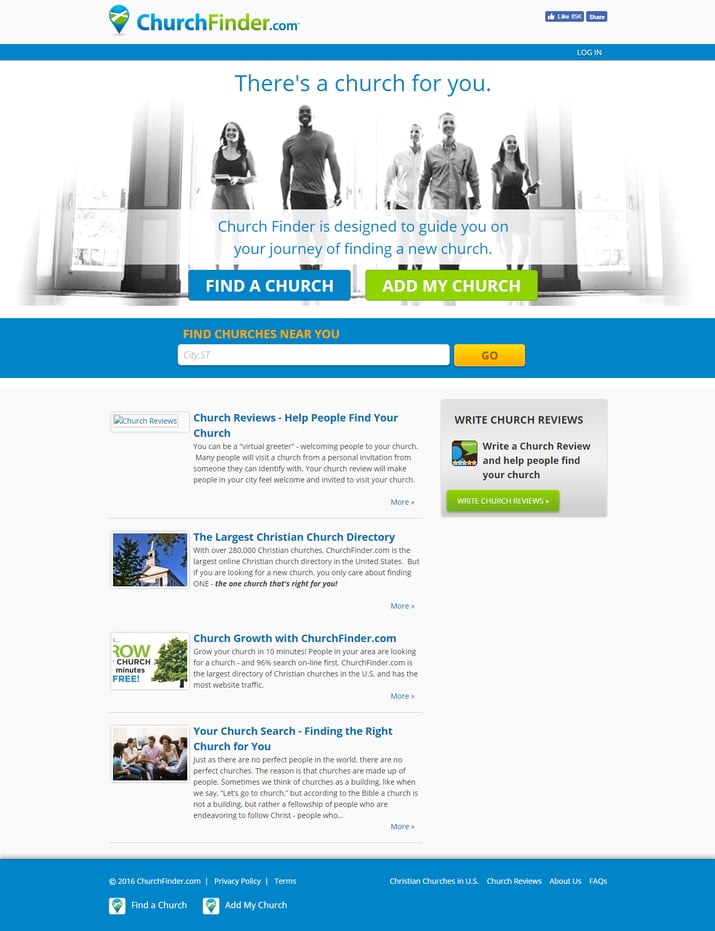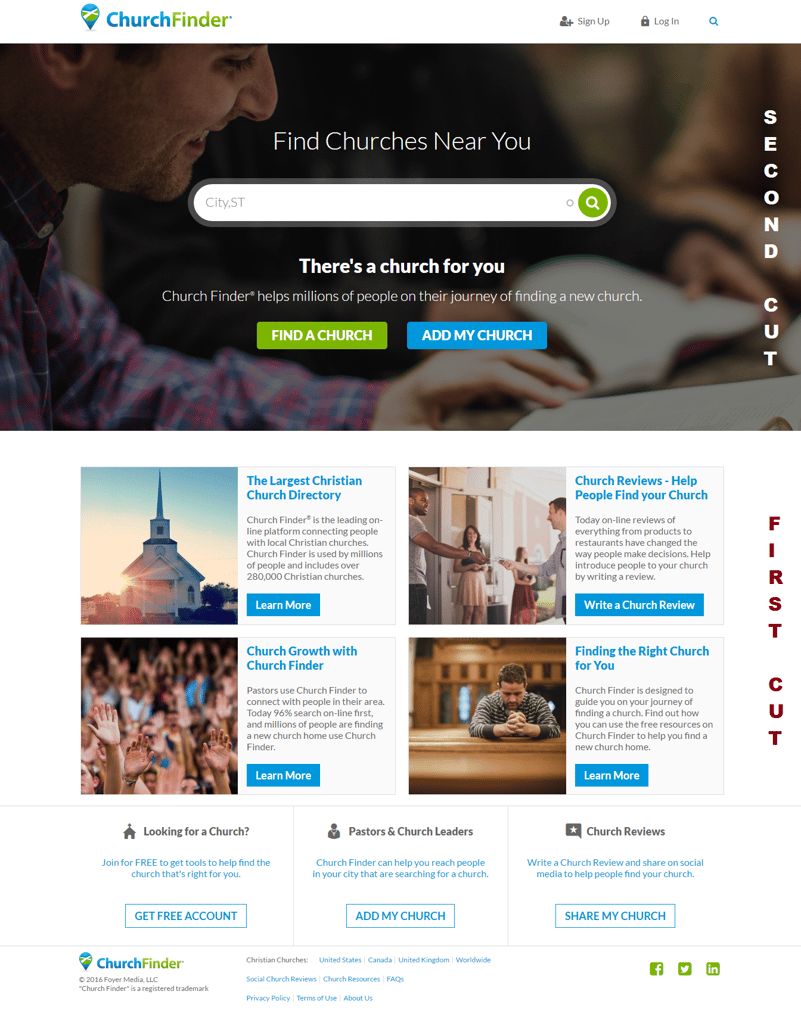The CEO of ChurchFinder.com had built the legacy website primarily using freelancers. But since the initial launch in 2014 the site had grown to over 400,000 pages indexed in Google and over 1 million
Key Objectives
-
Increase user engagement, reduce the bounce rate, and get visitors to view more pages per session.
-
Increase
conversion of churches from free to paid levels. -
Improve the old, complicated process
for adding/claiming/editing a church profile. -
Integrate user reviews and 5-star ratings into the church profiles.
-
The site was facing some minor performance issues as well, but these were not too significant, so they were not an immediate priority for the client.
Why Srijan
Srijan’s continuous development framework gives its clients access to a complete, highly skilled team, comprising Drupal developers,
The Solution
The Srijan team worked directly with the owner/CEO of ChurchFinder.com to revamp the site. They had daily calls to keep the client as well as the team in sync.
The team used JIRA as their task management tool. They added all the tasks to JIRA as user stories, covering each task in as much detail as possible. The team then sliced the stories into different iterations.
Tasks for each web page were spread across 2-3 iterations. When assessing any page, the team would first identify which elements needed to be revamped. These elements were then organized by level of priority. The first iteration of each web page included all the elements that were considered the
Instead of spending time on revamping non-critical elements, the team focused on finishing the first iteration of each page first, so that they could deliver maximum value to the client. In some cases, wherever time permitted, they worked on the second iteration as well.
Here is the example of the homepage-

Legacy Homepage

Revamped Homepage
Business Benefits
-
Time saved: In just two sprints (four weeks spread across two months), the team revamped almost 80% of the site.
-
Value delivered: Thanks to this approach, the team was able to complete
high value tasksearly, and delivered more stories than they had committed to in each sprint. -
High degree of flexibility: The team was flexible enough to accommodate new requests whenever they came in.
Revamping legacy websites becomes
We have performed website rehab and support for enterprises like the OPEN
If you are looking to redesign your website, for improved performance and optimized user experience, let's get in touch.




